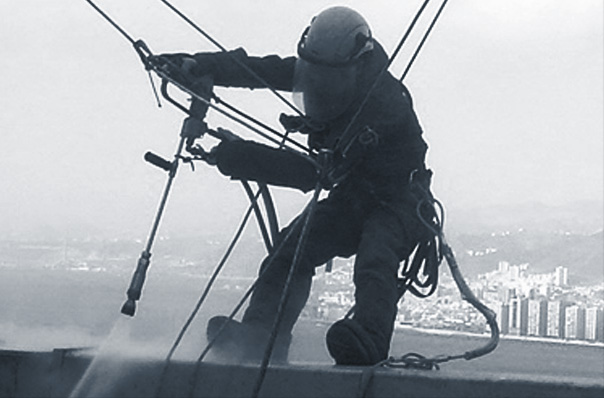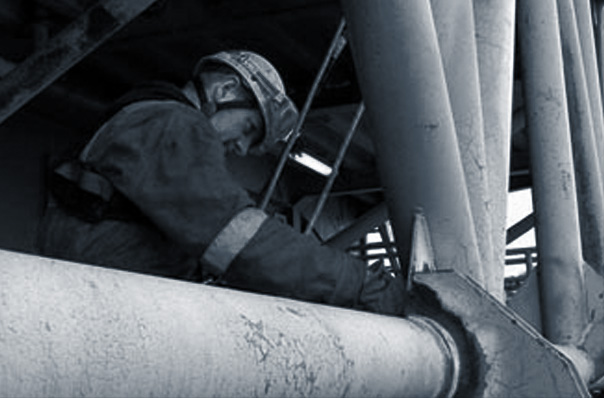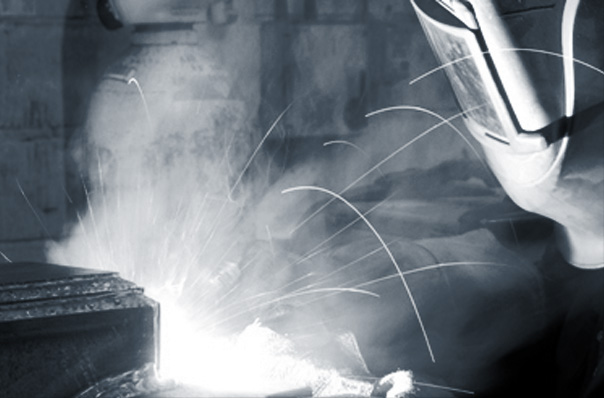Structural Rig Surveys
- SRS Inspection Division
- Non-Destructive Testing
- Dye Penetrant Inspection (PT)
- Eddy Current Inspection (ET)
- Magnetic Particle Inspection (MT)
- Ultrasonic Inspection (UT)
SRS Inspection Division
The Inspection Division of Structural Rig Surveys LTD (SRS) provides Inspection and Non-Destructive Testing services principally to the oil and gas industry, petrochemical, power generation and engineering industries on a worldwide basis.
The division also operate an unparalleled Integrity and Independent Inspection Authority service, incorporating specialised Inspection Systems to maximise output by minimising production downtime within Risk Based Inspection and Maintenance regimes.
Offices and operational bases are strategically located within the UK to offer instant access to major industrial areas worldwide. All activities are constantly monitored by the company's QHSE department to ensure that the highest standards are maintained at every stage of project execution and upheld by the company's QMS management systems.
We combine quality and safety with experienced management and advanced technical expertise to offer a complete service to industry worldwide. Wherever you are, and whatever inspection service you require, SRS can provide the service you require.
SRS Inspection produce full electronic and hard copy reporting packages for all of their projects, these are adapted to coincide with the clients requirements and standards.
Non-Detructive Testing
Non-Destructive Testing is the branch of engineering concerned with all methods of detecting and evaluating flaws in materials. Flaws can affect the serviceability of the material or structure, so NDT is important in guaranteeing safe operation as well as quality control and assessing plant life. The flaws may be cracks or inclusions in welds and castings, or variations in structural properties that can lead to loss of strength or failure in service. The essential feature of NDT is that the test process itself produces no deleterious effects on the material or structure under test.
SRS provide highly skilled, experienced and motivated personnel qualified and certified in accordance with international certification schemes (e.g. PCN (EN 473/ IS0 9712), ANSI CP-189 and SNT-TC 1A) in the conventional techniques that have underpinned the NDT industry from its earliest days.
Dye Penetrant Inspection (PT)
A low cost method of detecting surface breaking flaws, such as cracks, cold laps, porosity etc. The dye penetrant is drawn into the surface breaking flaw by capillary action and excess surface penetrant is then removed; a developer is then applied to the surface, to draw out the penetrant in the crack and produce a surface indication. The technique can be applied to any non-porous clean material, metallic or non-metallic, but is unsuitable for dirty or very rough surfaces.
Eddy Current Inspection (ET)
An electrical technique detecting surface breaking defects in all electrically conducting materials through paint and surface coatings. All electrical methods are indirect; a material property is measured as an electrical property variation. A coil carrying an AC current is placed on the specimen surface. This generates circulating eddy currents in the specimen close to the surface and these in turn affect the current in the coil by mutual induction. Flaws and material variations affect the strength of the eddy currents. The presence of flaws is therefore measured by electrical changes in the excitation coil. Applications range from crack detection to metal sorting and from tube, bar and weld inspection.
Magnetic Particle Inspection (MT)
An extremely cost effective method for the detection of surface and near surface flaws in ferromagnetic materials is primarily used for crack detection. Following magnetisation the specimen is covered with very fine iron particles either dry or suspended in a liquid. Surface breaking flaws distort the magnetic field causing local magnetic flux leakage that attract the iron particles producing a build-up that can be seen visually.
Ultrasonic Inspection (UT)
Ultrasonic methods of NDT use beams of mechanical waves (vibrations) of short wavelength and high frequency, transmitted from a small probe in contact with the specimen surface and detected by the same or other probes. Such mechanical vibrations have different forms depending on the direction of particle movement in the wave motion, so there are several forms of ultrasonic waves. The most common and widely used in NDT are compressional and transverse (shear) waves. They can travel large distances in fine-grain metal and an oscilloscope display (A-scan) shows the time that it takes for an ultrasonic pulse to travel to a reflector (flaw or back-surface). Applications include location of manufacturing defects in welds and castings through to Corrosion / Erosion monitoring and large scale corrosion mapping.
SRS Opens Cyprus operations base and Training School
Structural Rig Surveys SRS are pleased to announce that they have opened their Cyprus Operations base and Rope access IRATA training school in Limassol.
ISO 9001:2008, ISO 14001:2004
Structural Rig Surveys are pleased to announce the achievement of recertification by DNV/UKAS to ISO 9001:2008 and ISO 14001:2004.
-

Rope Access
SRS Inspection are firmly established as leading providers of multi-disciplined Rope Access services
-

Non Destructive Testing
The Inspection Division of Structural Rig Surveys LTD (SRS) provides Inspection and Non-Destructive Testing services principally to the oil and gas industry, petrochemical, power generation and engineering industries on a worldwide basis.
-

Project Management
The Project management division of SRS can provide a High End management solution service to your company's needs for inspection programmes, fabrication work scopes and shipyard or offshore projects.
-

Fabrication & Maintenance
The Fabrication and Maintenance division of SRS provides structural installation by both rope access and ground methods, from steel erecting to coating removal and application. UHP and Wet and DRY blasting, spray coating.